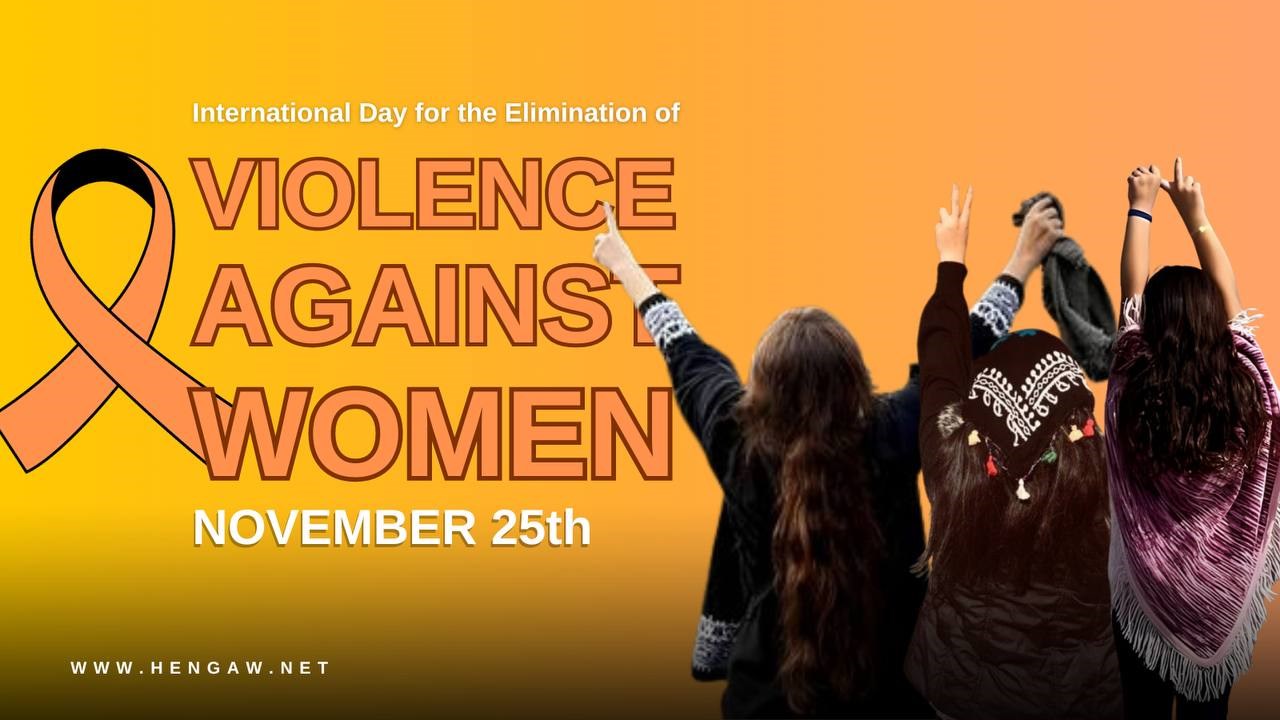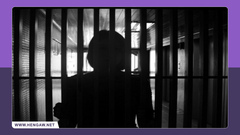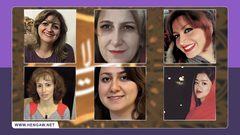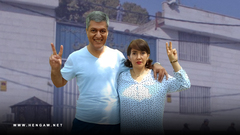Hengaw's exclusive report on the International Day for the Elimination of Violence Against Women and Women’s Rights in Iran
Citing the data recorded by the Hengaw Organization for Human Rights, approaching the 25th of November, the Internati

Hengaw, Saturday, November 25th, 2023
Citing the data recorded by the Hengaw Organization for Human Rights, approaching the 25th of November, the International Day for the Elimination of Violence Against Women, from the beginning of 2023 to date, 104 women have been killed in Iran. Within the same timeframe, 16 women have faced execution, and 128 female activists have received sentences ranging from flogging to imprisonment and execution. Additionally, in the current year alone, at least 308 female activists have been detained in Iran.
November 25th has been designated as the International Day for the Elimination of Violence Against Women since 1981. This day serves to emphasize global commitment to combating gender-based violence, commemorating the brutal murder of the “Mirabal sisters," political activists from the Dominican Republic. Feminist movements and gender equality advocates globally organize various campaigns around this date to raise awareness about gender-based violence.
Women in Iran not only face decades of restrictions under the Islamic Republic but have become more suppressed in the aftermath of the government's crackdown following the state-sponsored murder of Jina Amini, intensifying the oppression against women and gender equality activists.
104 women were killed in less than 11 months; over 32% of these murders were motivated by so-called honor killings
According to the data from the Center of Data and Statistics of the Hengaw Organization for Human Rights, 104 women have been killed in Iran since the beginning of 2023. At least 34 women, constituting 32.5% of the total, were killed under the label of what is commonly referred to as "honor." Tehran registered the highest number of murders, with 19 cases, equivalent to 18.2% of the total. Furthermore, 14 cases of women's killings were reported in West Azerbaijan (Urmia), out of which 9 were honor killings, indicating the highest incidence of such murders in this province. Kermanshah recorded 8 cases of femicide, while Fars and Karaj each reported 7 cases.
Almost half of the women killed were murdered by their husbands, accounting for 47% of the total cases. Additionally, 8 women were killed by ex-husbands and 5 by their fiancés. Between partners, the highest number of “honor” killings were committed by their immediate family members, such as fathers or brothers, constituting 24 cases of these killings. Other instances of femicide were carried out by individuals closely associated with the victims.
Femicide represents the most heinous form of violence against women, with the highest levels of misogyny. Contrary to prevailing beliefs, not all femicide is honor-based, and honor killings do not exclusively pertain to women. Instead, honor killings constitute a subset of femicides, where the victims may also include men murdered by others, generally men, for reasons defined as "honorable."
The increased reporting of femicides in recent years may not necessarily indicate a rise in actual occurrences but could be a result of heightened media awareness following the murders of Romina and the state-sponsored femicide of Jina Amini, creating a surge in the media coverage of femicide cases.
16 women were executed in less than 11 months
According to Hengaw's statistics, at least 16 women have been executed in various prisons in Iran since the beginning of this year. Out of these, 3 women were convicted of drug trafficking offenses, and 11 were sentenced to death for premeditated homicide by the judicial system of the Islamic Republic of Iran. Among these 16 executions, 4 cases were recorded in Isfahan's prison, and Kerman, Mashhad, and Rajaei Shahr prisons each reported 2 cases. Prisons in Khash, Birjand, Zahedan, Yasuj, Hamedan, and Qom also recorded two cases each.
128 cases of convictions for capital punishment, imprisonment, and flogging
According to Hengaw's statistics, in the past 11 months, at least 127 female activists across Iran have been sentenced to imprisonment by the judicial system of the Islamic Republic of Iran. Five of them, identified as Fatemeh Mehri from ShahreKord, Leila Mansour, Natasha Khodaverdi Javadi, Mojgan Ilanlou, and Fernaz Hassanzadeh from Tehran, and Mina Yaghoubi from Arak, Paria Karim Adnani from Saqqez, and Laleh Vahabi from Talesh, have been additionally sentenced to flogging, of which Laleh Vahabi's flogging sentence has already been carried out.
Moreover, a Kurdish female activist known as Nasim Namazi has been sentenced to execution by the third branch of the Revolutionary Court in Urmia.
Among the total of 128 women activists sentenced to imprisonment, 21 were Baha'i adherents, and 19 were Kurdish activists. Of those who were sentenced to imprisonment and flogging, 28 were detained for participating in the "Jin, Jian, Azadi” Movement.
308 cases of detention of women activists Since the beginning of the year
Based on Hengaw's recorded statistics, from the beginning of this year until now (328 days), at least 308 female activists across Iran have been detained by the security forces and organizations of the Islamic Republic of Iran. Out of the total detained women, 89, equivalent to 29% of all cases, were Kurdish women activists. Additionally, 50 Baha'i-adherent women activists, constituting 16% of the total, have been detained in various cities in Iran.
During the “Jin, Jian, Azadi” movement and its aftermath, the Islamic Republic's government has intensified the suppression of women in general and women activists in particular. This comes despite the fact that none of the societal and legal demands of women have been accepted by the Islamic Republic. On the contrary, with the presence of “hijab” enforcers known as "Morality Police" in Tehran's subways, it is evident that a segment of women, who in past years risked unveiling despite all dangers, are now intended to face more extensive and severe surveillance. The presentation of the "Hijab and Modesty" plan also indicates the government's intention to significantly broaden the social suppression of women in Iranian society.







